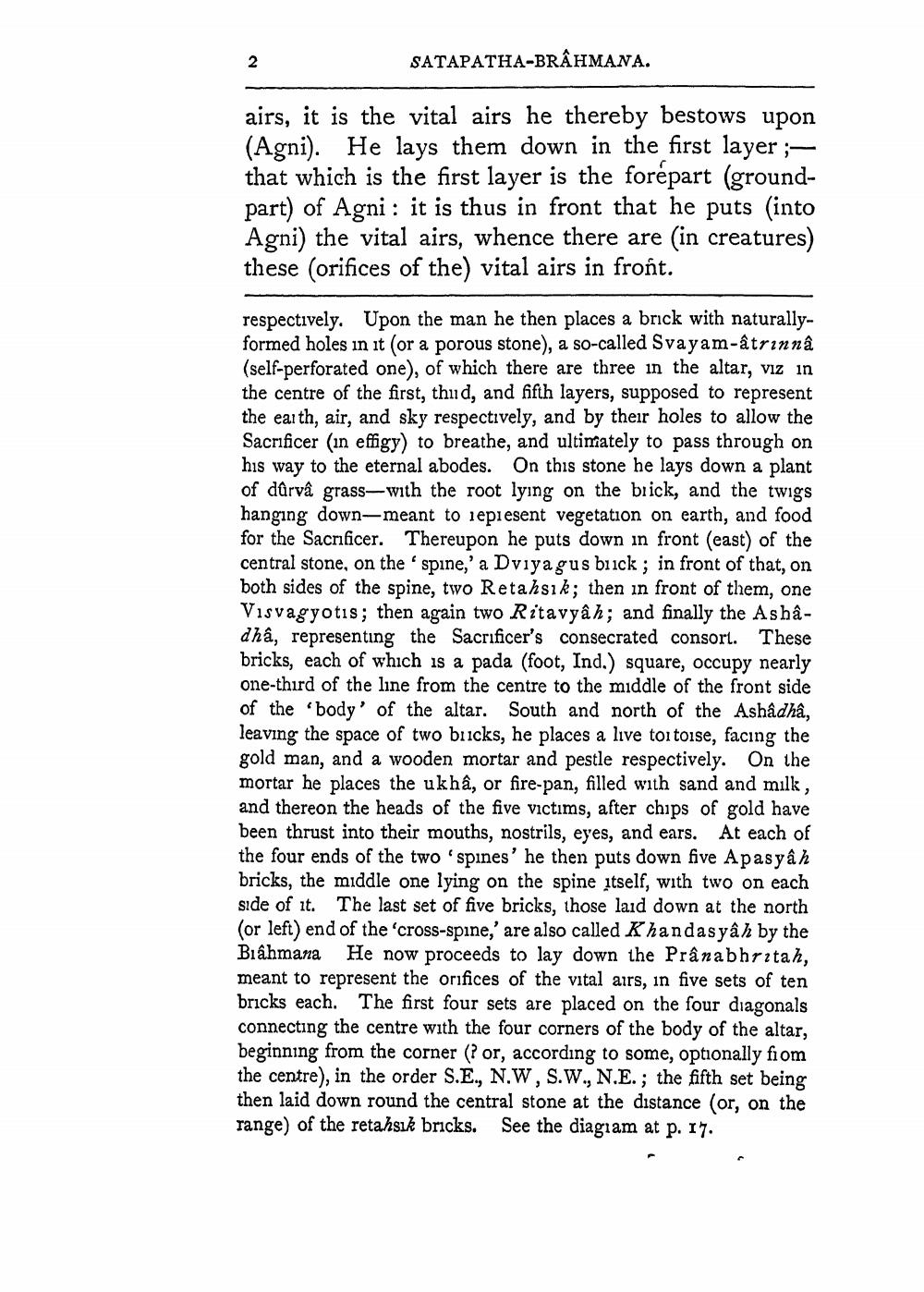________________
SATAPATHA-BRAHMANA.
airs, it is the vital airs he thereby bestows upon (Agni). He lays them down in the first layer ;that which is the first layer is the forepart (groundpart) of Agni : it is thus in front that he puts into Agni) the vital airs, whence there are (in creatures) these (orifices of the) vital airs in front.
respectively. Upon the man he then places a brick with naturallyformed holes in it (or a porous stone), a so-called Svayam-âtrinnâ (self-perforated one), of which there are three in the altar, viz in the centre of the first, thud, and fifth layers, supposed to represent the earth, air, and sky respectively, and by their holes to allow the Sacrificer (in effigy) to breathe, and ultimately to pass through on his way to the eternal abodes. On this stone he lays down a plant of dûrvâ grass—with the root lying on the brick, and the twigs hanging down-meant to iepiesent vegetation on earth, and food for the Sacrificer. Thereupon he puts down in front (east) of the central stone, on the spine,' a Dviya gus buck; in front of that, on both sides of the spine, two Retahsık; then in front of them, one Visvagyotis; then again two Ritavyâh; and finally the Ashadha, representing the Sacrificer's consecrated consort. These bricks, each of which is a pada (foot, Ind.) square, occupy nearly one-third of the line from the centre to the middle of the front side of the body' of the altar. South and north of the Ashâdha, leaving the space of two bucks, he places a live toi toise, facing the gold man, and a wooden mortar and pestle respectively. On the mortar he places the ukhâ, or fire-pan, filled with sand and milk, and thereon the heads of the five victims, after chips of gold have been thrust into their mouths, nostrils, eyes, and ears. At each of the four ends of the two 'spines' he then puts down five Apasyâh bricks, the middle one lying on the spine itself, with two on each side of it. The last set of five bricks, those laid down at the north (or left) end of the cross-spine,' are also called Khandasyâh by the Brahmana He now proceeds to lay down the Prânabhritah, meant to represent the orifices of the vital airs, in five sets of ten bricks each. The first four sets are placed on the four diagonals connecting the centre with the four corners of the body of the altar, beginning from the corner (? or, according to some, optionally from the centre), in the order S.E., N.W, S.W., N.E.; the fifth set being then laid down round the central stone at the distance (or, on the range) of the retahsık bricks. See the diagram at p. 17.




